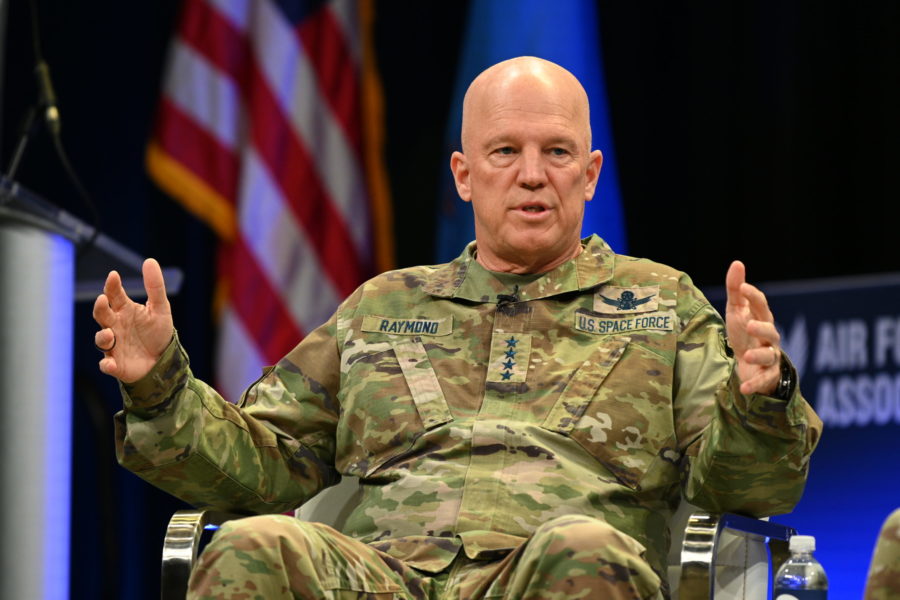The Space Force’s farthest satellites fly some 22,000 miles above Earth, with Guardians operating firmly on the ground.
But in the not-too-distant future, the head of the Space Force sees USSF satellites hundreds of thousands of miles away—and Guardians in space.
Chief of Space Operations Gen. John W. “Jay” Raymond isn’t saying this will happen in the next half-decade or so, he told audience members at the McAleese conference in Washington, D.C., on March 9. But especially when it comes to monitoring the vast reaches of cislunar space—the vast void between terrestrial orbits and the moon—Raymond said he envisions a need for the Space Force.
“First of all, I think it will become key terrain. And as … the nations of the world go further out from Earth, so is the Space Force going to have to do that,” Raymond said in response to an audience question about cislunar and lunar intelligence. “I’ve walked you through the near-term priorities: We have to be able to ensure that we can provide capabilities for our nation and for our joint coalition forces—it’s critical for the defense of all of our forces. If you were to look at the force structure of any other service, and if you took space away from it, that doesn’t close. They’re all built around having that assured access. That’s Priority 1.
“But as nations move out, and as the economy grows between here and the lunar surface, and as you look at key terrain for the defense of our nation, I think it’s an area that will be significant as we move forward.”
Raymond’s remarks come not long after the Air Force Research Laboratory released a video touting its forthcoming Cislunar Highway Patrol System—a satellite that will fly 272,000 miles from Earth. According to multiple media reports, AFRL will look to issue a request for prototype proposals by the end of March, followed by a contract this summer.
The need for domain awareness in cislunar space is likely to grow, Raymond has noted before. NASA plans on returning astronauts to the moon as early as 2025, and companies have interest in the region as well.
As for actually putting Guardians in space, Raymond noted that there are already a few Space Force service members who have been in orbit, and they give the service a unique perspective.
“They are Guardians that are NASA astronauts: Nick Hague works for me on the Space Force staff, and Mike Hopkins just showed up to work for me on the Space Force staff,” Raymond said. “It’s really cool to have people that have actually been a satellite—that have actually been in the domain—to help us understand it.”
Raymond also acknowledged public interest in the idea of service members actually operating in space. Such a possibility isn’t imminent, but Raymond indicated he thinks it will eventually happen, and not too far down the road.
“I don’t think that that happens in the next one, two, three, four, five years type of deal,” Raymond said. “But I do see a future … as things progress in space, I do see that there may be a role for Guardians that will be in space. So I think that will happen in the .. career timeframe of the Guardians that are coming into service right now.”
Those comments echo some made by the head of Space Operations Command in July 2021. Lt. Gen. Stephen N. Whiting told Air Force Magazine at the time that his message to young Guardians was “if we think about a 20-year career arc, there’s a good chance there will be Guardians either on orbit or transiting through space for some military missions.”
